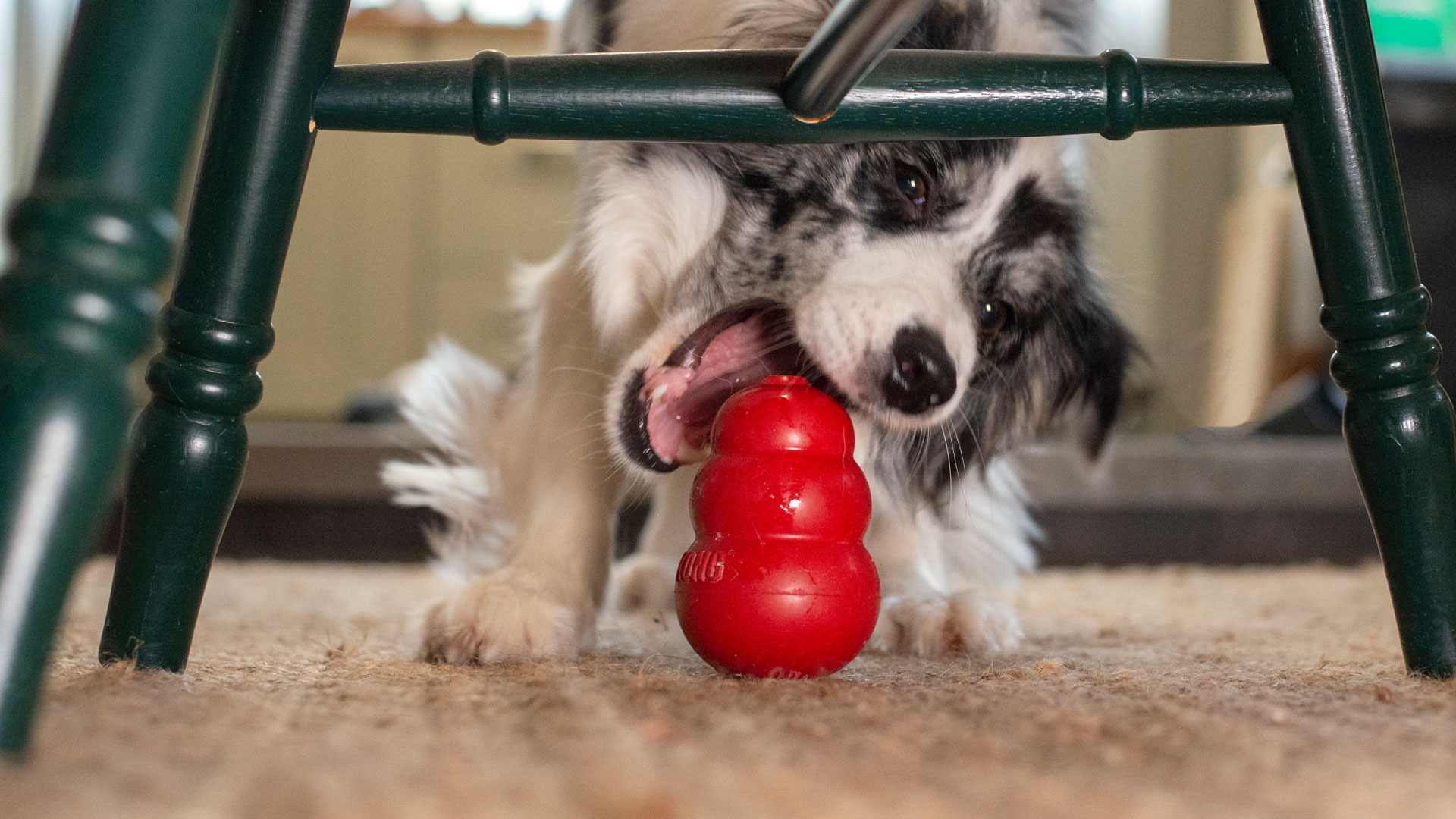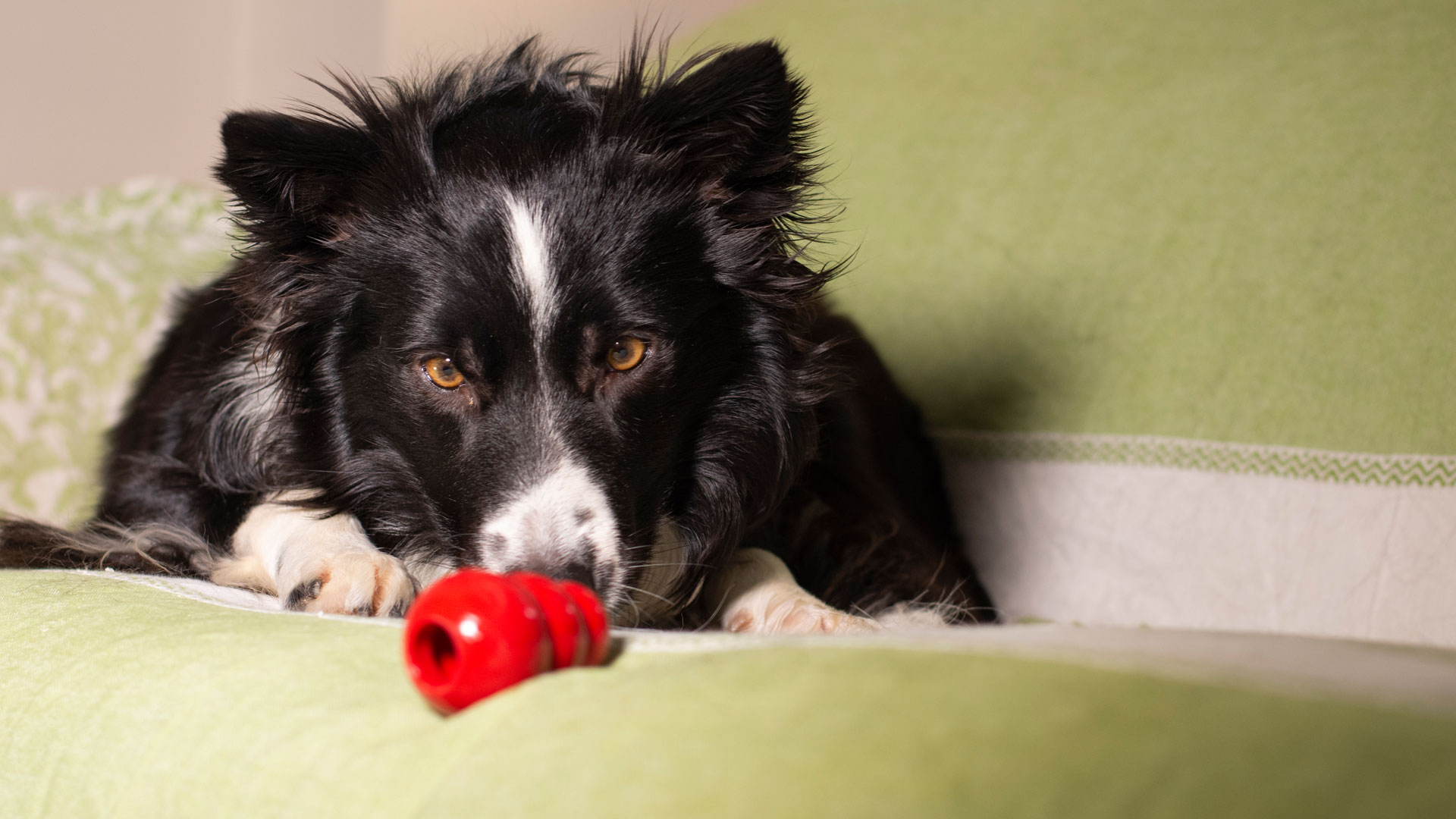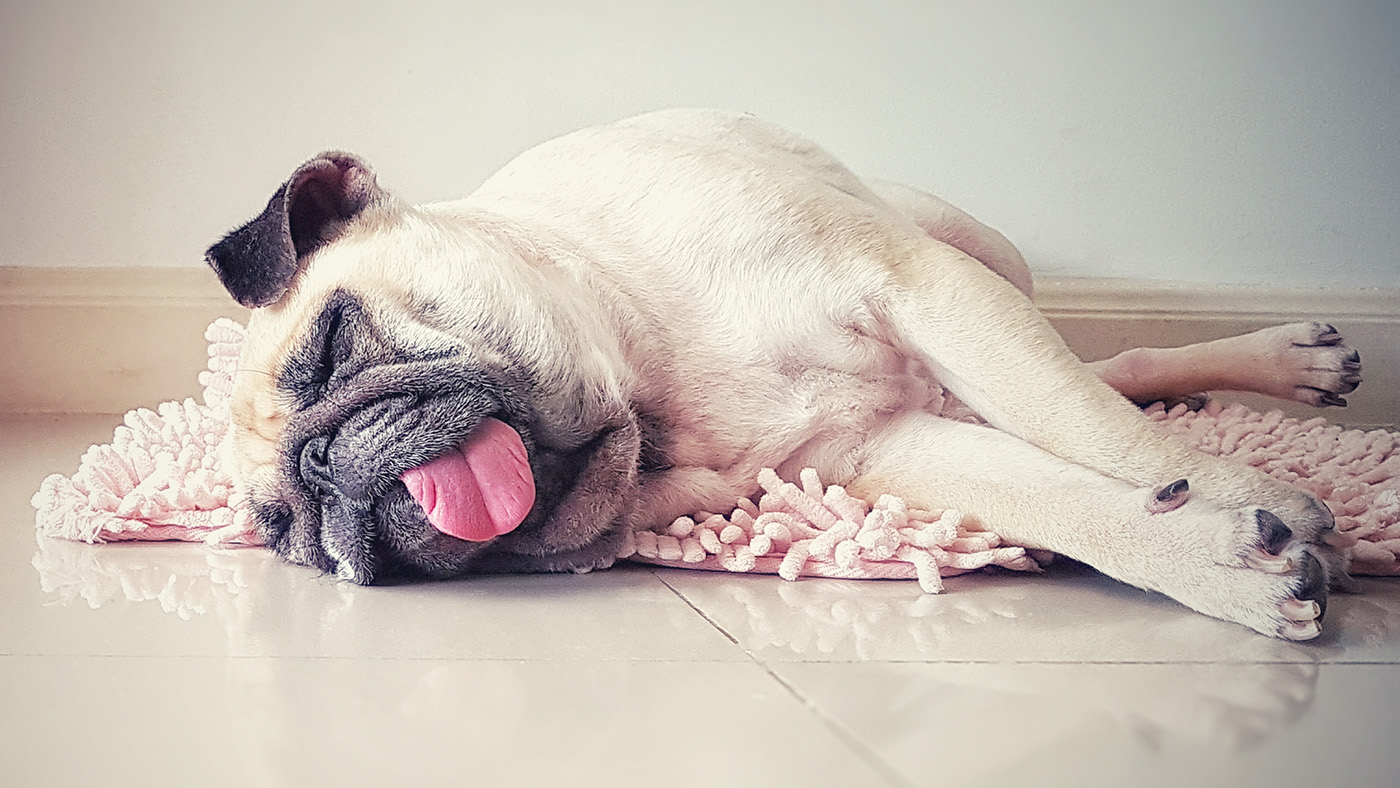This Kong hack is the perfect way to tire out my dog (and it's not what you think)
Many dog owners have a Kong or two knocking around – but I bet you’ve never tried this hack

First invented in the 1970s, the humble Kong is a staple dog toy for many owners across the world. Whether it’s given to your dog as a chew toy, stuffed with a meal and frozen, or used as a treat dispenser, the Kong toy is incredibly versatile. However, there’s even more to a Kong than meets the eye.
When I was attending dog training classes with APDT-certified dog trainer and UK Sniffer Dogs Instructor Lara Sorisi, she explained that a Kong is also perfect for introducing your dog to scentwork.
“It’s been scientifically proven that red Kong toys have their own unique scent compared to other toys. This means that they’re a great starter base for scentwork, as dogs are able to easily differentiate them from other objects with just their nose. One of the main reasons I like using Kongs for scentwork is that their scent dissipates from the area they were placed within 10 seconds of removal. This makes them great for adult dogs but also one of the best puppy toys.
“The reason this is important is that it really streamlines the scentwork training process. Most scentwork training is done with cloves or catnip, as these have really strong scents. However, once they’ve been placed somewhere, the area needs to be thoroughly cleaned. A lot of dogs that are really clever will go back to where the previous scent was, so if there’s any residue then this will confuse them. However, as a red Kong’s scent dissipates so quickly, you don’t need to worry about cleaning the area afterward.”
Scentwork is a fantastic activity for any dog. Not only does it enable them to use their strongest sense to interact with the world, but it’s also incredibly taxing on their brain too. Plus, if you have a senior dog or one recovering from an injury or illness, it’s a really inclusive activity that doesn’t require any physical exertion.
Lara says that “Scentwork is a fantastic form of mental enrichment and stimulation. While dogs have been domesticated for thousands of years, finding a good outlet for them to fulfil their predatory sequences is a really rewarding form of enrichment and training. It’s also a great way to connect with dogs that have anxiety or reactivity, as the act of sniffing is calming for dogs. To be honest, I’ve never met a dog that doesn’t love scentwork.”
As the owner of a high drive border collie, I spend a lot of time trying to figure out new and interesting activities to keep her engaged and stop her from getting bored. Fenwick can find being around other dogs very stressful at times, so it’s been necessary to try a wide variety of different activities to tire her out on the days when she’s particularly reactive. Scentwork is perfect for Fenwick on many fronts – it gives her something specific to focus on, it really works her brain and the act of sniffing itself helps to calm her down as well.
PetsRadar Newsletter
Get the best advice, tips and top tech for your beloved Pets

Lara Sorisi is a science-based and force-free dog trainer that has been working with dogs for many years. She is accredited by the APDT (Association of Pet Dog Trainers), which is one of the most rigorous dog training qualifications available. Lara holds a bronze-level qualification with UK Sniffer Dogs, which means that she is an accredited UK Sniffer Dogs instructor. Lara has trained her own dogs to be trial winners and dedicates her time to helping other dog owners in group and one-to-one sessions.
How to teach your dog scentwork with a Kong
So, how can you teach your dog this Kong scentwork hack? I’ve broken down everything you need to know below.
1. Do some prep work
Before you begin your scentwork training, make sure that you’ve prepared some yummy treats to reward your dog with. You’ll also want to choose what phrase you want to use – I personally use ‘Seek’, but you might like to try ‘Find Kong’ or whatever works best for you.
2. Introduce the Kong to your dog
When you first introduce this scentwork game to your dog, you want to keep it as simple as possible. This should be a case of ‘errorless learning’, where your dog can only succeed and they don’t have the opportunity to get anything wrong.
Crouch down to the same level as your dog with your hands behind your back, with some treats in one hand and the Kong in the other. Present the hand with the Kong to your dog and say your command phrase (we’ll use ‘Seek’ for the purpose of this article). When your dog touches its nose to the Kong, mark the behavior with a ‘Yes’, ‘Good’ or whatever your marker cue is. At the same time, use your hand with the treats to hold a treat on the Kong for your dog to eat. By feeding the dog a treat so close to the Kong, it’s helping to reinforce that Kong means good, tasty things to your dog.
Repeat this step for as many times as it takes until you feel that your dog is confidently performing the behavior and really understands what you’re asking for.

3. Start moving the Kong away from you
Now you’ll start placing the Kong on the floor next to you rather than keeping it in your hand. This will help teach your dog that it’s the Kong that’s important, not your hand itself. Ask your dog to ‘Wait’, so that they don’t immediately follow the Kong. Once they’re settled and looking at you, say ‘Seek’ to release them to go to the Kong. Keep everything else the same for the best results, with both hands starting behind your back and feeding your dog their treat on top of the Kong.
If your dog is happy and confident with the Kong placed close to you, you can start moving it further away incrementally. Again, make sure not to rush this process, as each individual dog will learn new activities at their own pace. If your dog is struggling to understand what you want from it, simply reset and go back a step to make it easier. Make sure that you don’t react negatively if your dog gets something wrong, as you want this to be a fun and positive experience for both of you.
4. Start hiding the Kong
Once you feel that your dog fully understands this activity, you can try hiding the Kong for them to find it. When your dog has reached this point, you want to make sure that they’re not seeing you hide the Kong. The best way to do this is to simply put them in another room and ask them to ‘Wait’ (or close the door if you know that they’ll likely come through without your command).
When hiding the Kong, make sure to start off as easy as possible again. Perhaps try hiding it around the corner of your couch, or under a loose flap of blanket. As your dog gets used to scentwork, you’ll be able to challenge them more, but you’ll want to avoid frustrating them by making it too hard at this early stage.
Again, if your dog struggles to figure out what you want, simply take your training back a step (although make sure you’ve given them enough time to try and figure it out themselves first).
5. Get creative with your hiding spots
Fenwick is now at the stage where I have to think really hard about my hiding spot to properly challenge her. I’ve discovered that placing the Kong above her head height makes it more difficult, so placing it on table tops or nestled among couch cushions makes her work a little harder. If you have some leftover cardboard boxes, you could try hiding your Kong amongst them too. There are a wealth of possibilities when it comes to scentwork!
If you find that your dog really enjoys scentwork, I’d recommend finding a certified scentwork instructor to help you take them to the next level. Alternatively, if there’s no one available in your area, UK Sniffer Dogs has some fantastic online courses as well.
Looking for more training advice? Here’s how to stop a dog jumping up.
Louise Carey is a freelance writer and the Editor of sister website Top Ten Reviews. She has been working in publishing for seven years, contributing to publications including The Independent, TechRadar, Digital Camera World and more. As the proud pet parent of a reactive border collie with a food allergy, it’s been necessary for Louise to explore a variety of fun and exciting ways to enrich an energetic dog that can’t always go on walks. She’s passionate about sharing the information she’s learned to help other pet owners as well.

